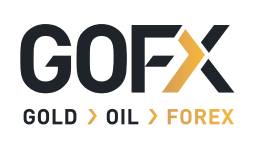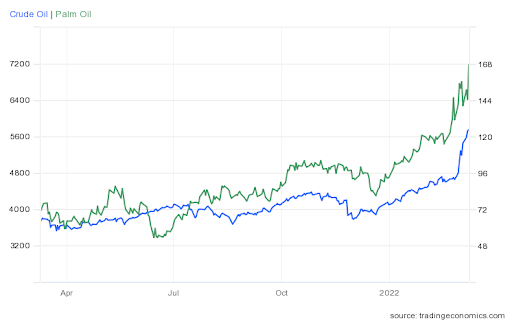At the beginning of 2022, the movement of the global economy is still overshadowed by the COVID-19 virus. Although the effect has subsided for the Delta variant, the Omicron variant which was only detected in November 2021 poses a new threat to various sectors, including commodities.
One of the commodities that is in the main focus is oil. Based on its function, oil commodities can be divided into two categories, namely crude oil which functions as an energy product and vegetable oil which functions as a consumption oil product.
Crude Oil
As a commodity whose derivative products are widely applied in the form of fuel, this commodity is the most affected during the implementation of activity restrictions and lockdowns due to the COVID-19 pandemic.
At the beginning of 2022, the movement of crude oil prices was observed to continue the bullish rally since the close of last year. This increase was triggered by the decision of OPEC and its allies (OPEC+) to maintain the commitment previously agreed at the regular meeting in July 2021, namely to increase production by 400,000 bpd per month.
OPEC+ also signaled reluctance to add more supply to the market. Even though global fuel consumption has shown an increase after the lifting of lockdown policies in various countries.
In addition, the Indonesian government's decision to temporarily halt coal exports during January 2022 has rattled the energy market. This has also prompted the shift to other substitute energy products such as natural gas and crude oil. The natural gas market itself is being hit by problems related to tight supply. As a result, crude oil becomes the foundation of hope to cover the supply shortage in the natural gas and coal market. Crude oil prices posted an increase of 15.86% throughout January 2022.
In February 2022, the climax of the geopolitical conflict in Eastern Europe marked by Russia's invasion of Ukraine (24/2) also triggered turbulence in global energy markets. As a result, the price of crude oil skyrocketed to almost touch the level of $100 per barrel at the close of February or soared by 25.81% when compared to the price position at the beginning of the year which was at the level of $76 per barrel.
Entering March 2022, the still escalating Ukrainian conflict pushed crude oil prices to continue bullish, even breaking above $100 per barrel (2/3), the highest level since 2014. Several attempts have been made to curb the price spike, including plans to coordinated release of oil from the country's strategic reserves (2/3) by the US and 30 member countries of the International Energy Agency (IEA) with a total amount of 60 million barrels of oil; embargo on Russian energy products (6/3); to the plan to relax sanctions on Venezuela (8/3). However, these efforts have not been able to offset the effects of the conflict in Ukraine.
Vegetable Oil
Vegetable oil is a consumption oil derived from plants, which includes palm oil, soybean oil, corn oil, sunflower seed oil, and so on. For reference prices that are used as an illustration of looking at the vegetable oil market, generally market participants use the price of palm oil or better known as Crude Palm Oil (CPO) and also the price of soybean oil.
Starting 2022, CPO producing countries, namely Indonesia and Malaysia, are still overshadowed by the threat of la Nina weather which is predicted to persist until the first half of 2022 (Q1). In fact, the initial prediction predicted that la nina weather would end in February 2022. In addition to the la nina effect, Malaysia, which is the 2nd largest CPO producer in the world, is also faced with the problem of labor shortages in palm oil plantations due to the soaring spread of COVID-19 triggered by the Omicron variant.
Meanwhile, CPO substitute oil producing countries are also being hit by concerns in line with rising tensions in Eastern Europe. Tensions are marked by an increase in the number of Russian troops to more than 100,000 troops on the Ukrainian border by December 2021. Russia and Ukraine, together, supply more than a quarter of the world's wheat exports, nearly 20% of maize exports and 80% of sunflower seed oil exports. .
The tight supply in the CPO market, together with supply disruptions in the vegetable oil market, helped to lift CPO prices to continue to climb. As a result, in order to stabilize oil prices and ensure supply is maintained in the domestic market, the Indonesian government has imposed a Domestic Market Obligation (DMO) which has been effective since February 1, 2022. The DMO mandate requires all CPO exporters to allocate 20% of their export quota for sale. in the domestic market.
On the other hand, conflict tensions in Ukraine continued to escalate until the Russian invasion on February 24 led to the closure of access in the Black Sea region. Vegetable oil prices have also skyrocketed, as the Black Sea region accounts for 60% of the world's sunflower seed oil production and 76% of global sunflower seed oil exports. As a substitute production, the increase in vegetable oil prices will certainly contribute to an increase in CPO prices.
Entering March 2022, CPO prices are still skyrocketing. Indonesia, which is the world's first largest CPO producer, is hit by a shortage of olein cooking oil stocks. This means that the supply of Indonesian CPO exports to the global market has decreased. Seeing this situation, the Indonesian government announced (9/3) an increase in the percentage of DMO from 20% to 30% effective as of March 10, 2022.
The bullish trend in CPO prices was finally quelled by the effects of the new wave of COVID-19 that hit China again. The new wave has triggered fears of a decline in demand from the world's 2nd largest CPO importer. The spread of the infection, which has spread to 18 provinces, forced the Chinese government to re-implement a lockdown (13/3) in 10 regions including the city of Shenzhen, which is China's technology center.
by: Girta Yoga
Get more information about oil and other commodities at The Source 22: ICDX 1st Quarter Update
- Inflasi Inti Jepang Bulan Maret Melambat Tekan USDJPY
- Minyak Melonjak Dipicu Berita Ledakan Fasilitas Penting Iran
- Trend Positif Ekonomi AS Tak Mampu Redam Kenaikan Emas
- Mengenal Lebih Dekat: Industri Perdagangan Berjangka Komoditi
- Membaiknya Angka Inflasi di Inggris, Bawa Angin Segar Pada Kinerja Poundsterling









